sponsorship agreements in the sports world: the promise of fame and exposure
In stark contrast, other observers applauded this initiative, viewing Neymar as the harbinger of an era in which sports talent would finally be valued for its true worth.
Even before he?d laced up his cleats for his new team, Neymar was already shining a warm spotlight on the Saudi kingdom. At a press conference on September 7, 2023, the Brazilian forward cheekily likened France?s League 1, in which he used to play (it is ranked the fifth-best soccer league in the world) to Saudi Arabia?s (ranked 36th): ?Considering all the big names in this League, this championship may well be better than League 1.?2 Needless to say, his comment sparked a tidal wave of reactions. For comparison purposes, Major League Soccer (MLS), CF Montreal?s home league, is ranked #29 in the world.
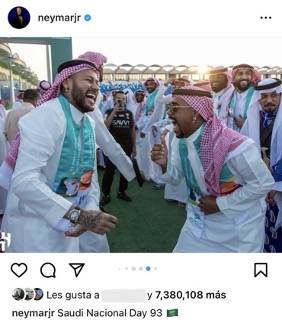
Figure 1: Photo posted on Instagram by Neymar (left), who appears to be enjoying himself in Saudi Arabia. This post was ?liked? by over 7.3 million Instagram users.
Thriving on competition, passion and adrenalin, the sports world is fertile ground for sponsorship agreements. These arrangements serve as strategic alliances that capture the essence of contemporary sports and transcend the limits of the games involved.
In our last two articles, we took a look at issues surrounding the naming of sports teams, followed by agreements governing the naming of stadiums and arenas. This time around, we will delve into the topic of sponsorship agreements. In addition to defining what they are, we will focus on how these agreements are used and structured, including their objectives and associated risks.
WHAT ARE SPONSORSHIP AGREEMENTS?
Sponsorship agreements, also known as sponsorship deals, are commercial agreements entered into by a beneficiary (an organization, individual or event) and a sponsor (a company or brand).
As a general rule, these agreements provide financial compensation, goods and/or services in return for visibility, promotional impact or the sponsor?s association with the beneficiary. To be sure, such deals are not exclusive to the sports world. However, sports have definitely played a key role in how these agreements have evolved, transforming them into tools at the forefront of commercial progress. In this article, we will focus on how these agreements are used in the sports world.
THE POWER OF SPONSORSHIP AGREEMENTS
In essence, sponsorship agreements enable a sponsor to benefit from the exposure, fame and/or positive image associated with an athlete. At the same time, they may allow athletes to boost their own visibility and develop their own brands in partnership with the sponsor.
The film Air, initially released in cinemas in 2023 and now exclusively available on the Prime Video streaming platform, depicts the dynamic of sponsorship agreements. It retraces the origins of the emblematic partnership between Nike and basketball legend Michael Jordan, which ended up redefining how athletes approach business partnerships. The Nike partnership gave rise to Air Jordan, the world-famous line of basketball shoes, marking an initial milestone in the history of sponsorship deals.
In April 1985, the first series of Air Jordans came onto the market (see Figure 2); Nike was aiming for $3 million in sales over an initial three-year period. However, by the end of the first year alone, sales topped an impressive $126 million. In 2022, it was reported that Michael Jordan had earned between $150 million and $256 million just from his contract with Nike.
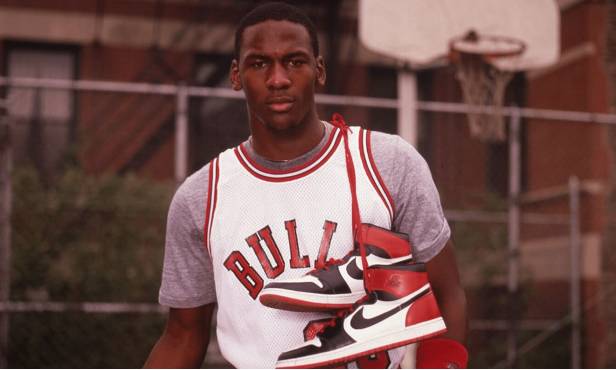
Figure 2: Michael Jordan and the very first Air Jordans in 1985. The colour red was in violation of National Basketball Association (NBA) rules at the time. As a result, Nike paid a fine of $5,000 per game.
KEY OBJECTIVES OF SPONSORSHIP AGREEMENTS FOR ATHLETES
Main objective: financial gain
Quite often, the main objective is financial gain. In addition to Michael Jordan, other star athletes have signed agreements with Nike. LeBron James? and Cristiano Ronaldo? own deals with Nike are reportedly valued at US$1 billion. Meanwhile, Argentina?s Lionel Messi, the eight-time Ballon d?Or winner, entered into a similar agreement with the brand Adidas.
The case of Michael Jordan, however, is unique insofar as a family of strong and distinctive brands was developed, including Air Jordan and various logos representing Michael Jordan playing basketball. This brand family is owned by Nike, although it is inherently linked to the athlete reaping its benefits.
In Quebec, tennis player Félix Auger-Aliassime, a victim of his recent success, signed agreements with Dior and Renault in early 2023 as these companies added their names to his existing list of sponsors, which included Adidas. The compensation paid by these brands has not been disclosed, but Félix is now displaying the Renault logo on his T-shirts?even more prominently than the brand of the T-shirt itself (Figure 3).
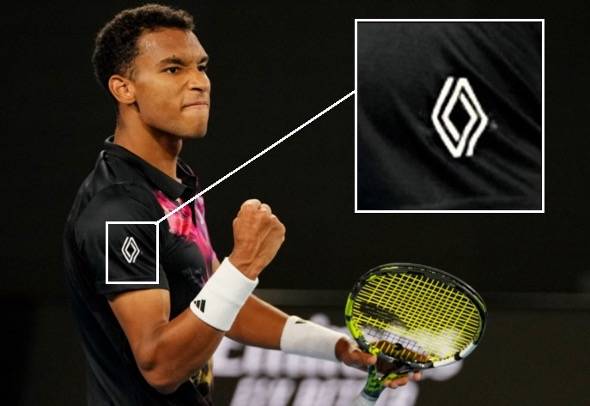
Figure 3: Félix Auger-Aliassime and the Renault logo. The Adidas logo is also visible on his wristbands.
Objective: enhanced reputation and greater credibility
Reputation and credibility are vitally important in the sports world. Teaming up with a reputable sponsor can boost an athlete?s credibility in the eyes of fans, the media, potential partners and other teams.
As with naming rights agreements, upholding the same values and selecting the right sponsor are the key to these agreements.
Consider Félix Auger-Aliassime?s remarks after signing his deal with Renault: ?I?m proud to be associated with Renault because we share the same ambitions and values [?].?3
Chelsea FC, which competes in England?s Premier League, kicked off its 2023-204 season without its main sponsor. In addition, there was no corporate logo displayed on the front of the players? jerseys, even though that has become the norm in the soccer world (Figures 4 and 5).
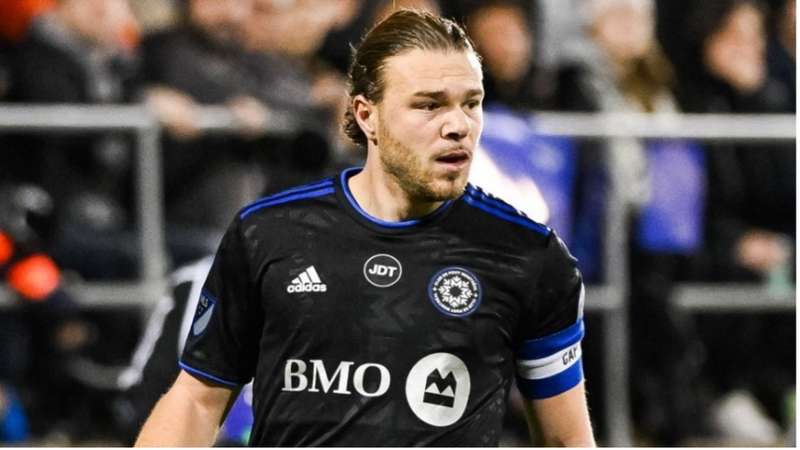
Figure 4: As CF Montreal?s main sponsor, Bank of Montreal (BMO) has its logo is displayed on the front of the team?s jerseys.

Figure 5: Chelsea?s jersey has no corporate logos (the club has no main sponsor).
In fact, Chelsea had signed an agreement with Stake.com, an online casino that describes itself as a pioneer in the area of crypto sports betting. As soon as the deal was announced, fans made their displeasure known: Chelsea Supporters? Trust, which serves as the voice of the team?s fans, declared: ?We understand CFC?s desire to maximise revenue streams across the whole club. Whilst we accept that will happen, it must not take place at the expense of the club?s values.?4 Chelsea thus terminated the agreement but appears to have found a new partner, the US-based technology company Infinite Athlete. That deal is valued at around $66 million per year.
Objective: an equitable relationship between the parties (student athletes)
For some athletes, sponsorship agreements are also a way to establish an equitable relationship between all parties, ensuring that they do not lose out on any benefits derived from their name, image or likeness.
This is certainly the case for student athletes competing in the American university system, particularly the National Collegiate Athletic Association (NCAA). In June 2021, the US Supreme Court ruled that the NCAA was not legally authorized to limit payments related to students? education. This gave rise to what are known as ?NIL deals?(name, image, and likeness). Student athletes are now entitled to enter into sponsorship agreements covering their name, image and likeness (the latter term refers to any representations of the athlete, whether in videogames, cartoons, etc.).
The champion of NIL deals is undoubtedly Olivia Dunne, a gymnast at Louisiana State University. She is one of the first student athletes to become a millionaire thanks to these deals; she is certainly the best known (Figures 6 and 7). Her arrangements with brands such as American Eagle, Forever 21 and Vuori have generated more than $4.7 million. She ranks third in earnings in the list of athletes with NIL deals, just behind quarterback Arch Manning at $5.1 million (nephew of former football players Peyton and Eli Manning) and basketball player Bronny James at $9.7 million (son of LeBron James). Will we ever see NIL deals for student athletes in Quebec?
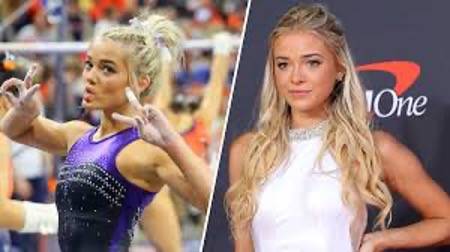
Figures 6-7: Olivia Dunne, gymnast and multi-millionaire at age 20 thanks to her sponsorship deals.
KEY OBJECTIVES FOR SPONSORS
As far as sponsors are concerned, their objectives are usually quite similar. They hope to obtain greater visibility and promotion by linking their brand, products or services to a famous professional athlete. This may entail significant media exposure while targeting a specific segment of the public.
This was what lululemon had in mind when it partnered with Connor Bedard, the most recent #1 draft choice in the National Hockey League (NHL). The company, which started out selling yoga wear, is now reaching out to hockey fans in a bid to strengthen its reputation as a top-of-the-line sports apparel retailer.
In the run-up to the NHL draft, the name of Connor Bedard?a once-in-a-generation talent?was on everyone?s lips. His endorsement deal with lululemon was announced a few days before the draft, thanks in part to a video in which he said: ?If I make this shot, I?ll join lululemon as their newest ambassador.? He then executed a perfect shot, adding a dramatic note to the announcement (Video 1).
Video 1: Announcement marking the sponsorship agreement between lululemon and Connor Bedard.
Following the partnership announcement, Connor Bedard said: ?Being from Vancouver, I?ve been a fan of lululemon for as long as I can remember. The gear is so comfortable, stylish, and great for training.?5 Since the company was founded in Vancouver, it is understandable that this partnership is seeking to capitalize on a shared sense of belonging.
Obviously, sponsors are also seeking to boost their sales or profitability via increased exposure and visibility derived from a sponsorship deal. Gaining access to a specific target audience heavily engaged in the athlete?s chosen sport can be a major selling point.
HOW SPONSORSHIP AGREEMENTS ARE STRUCTURED
As regards structure, sponsorship agreements differ in terms of the breadth and scope of the visibility being sought.
Structure of local sponsorship agreements
Local sponsorship agreements are entered into when:
- A local company decides to fund an athlete or a sports event.
- A company sponsors a local athlete or a local sports organization.
A local sponsorship agreement does not necessarily mean a smaller-scale deal. RBC?s and Air Canada?s sponsorship arrangements, under which their respective logos are featured on Montreal Canadiens jerseys, are examples of local agreements (Figures 8 and 9).

Figure 8: The Montreal Canadiens team jerseys now feature the logos of RBC and Air Canada.
Structure of national or international sponsorship agreements
Seeking much more extensive visibility, national or international sponsorship agreements are typically larger-scale initiatives. More sophisticated and with farther-reaching ramifications, these types of agreements must also take into account issues spanning multiple jurisdictions.
Compensation structure
In certain major agreements, the athlete?s financial compensation structure may vary widely. Fixed and pre-determined compensation is typically the norm. Understandably, agreements in which a trademark linked to an athlete is used for a specific product line may include royalties or tiers (thresholds) associated with the products? commercial performance.
Duration impacts the structure of sponsorship agreements
Sponsorship agreements also vary in terms of their duration. A company may decide to sponsor an athlete for a lengthy period or for a one-time event or competition.
On September 13 2023, the new Professional Women?s Hockey League (PWHL) announced its very first sponsor: Canadian Tire Corporation (CTC). Strictly speaking, this is an international agreement because the PWHL operates in both Canada and the US.
At the time, Sarah Nurse, a forward with PWHL Toronto, said: ?Through numerous conversations with their key leaders, it has always been clear that [CTC was] committed to supporting a women?s hockey league. It is no surprise that CTC is an inaugural partner now that we have launched the PWHL. With our shared values and vision, I know that CTC will continue to put women?s hockey at the forefront?6 (Figure 9).
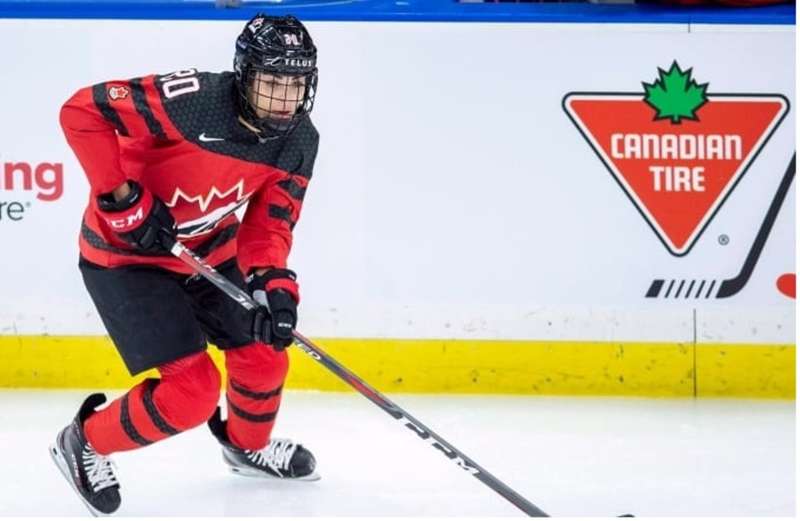
Figure 9: Sarah Nurse, who represented Canada at the Winter Olympics, will be playing in the PWHL, which recently signed a sponsorship deal with Canadian Tire.
RISKS OF SPONSORSHIP AGREEMENTS: WHAT YOU NEED TO KNOW
There are also a number of risks associated with signing a sponsorship agreement. Professional athletes are continually being placed under a microscope. Everything they do has a potential impact on their sponsors.
Morality clause
Consider the case of golfer Tiger Woods, who was embroiled in a personal scandal back in 2010 that left his reputation in tatters. Seeking to avoid being associated with this loss of reputation, various companies and organizations terminated their deals with him (Table 1).
Table 1: List of sponsors that terminated or continued their involvement with Tiger Woods in the wake of his scandal. Today, Nike and Upper Deck are still associated with Tiger Woods, along with 10 new sponsors.
To enable the parties to terminate agreements easily and at no charge should any situations akin to that of Tiger Woods arise, sponsorship agreements typically include a morality clause (also known as a ?morals clause?). Morality clauses impose ?good conduct? obligations on athletes and stipulate that if they engage in any actions that could tarnish or harm their own reputation or that of their sponsor, the sponsor has the right to suspend or unilaterally terminate the agreement. It was thanks to this clause that Gatorade and Gillette, to take only two examples, ended their agreements with Tiger Woods. The first morality clause in the sports world was included in the employment contract of Babe Ruth, the renowned baseball player with the New York Yankees in the 1920s.
Reciprocal clause
One might think that certain athletes would prefer to have a reciprocal clause in place enabling them to cut ties with any sponsor whose reputation is marred by scandal (inhumane work conditions, pollution, financial wrongdoing, etc.). Although less frequent, these clauses could still prove useful, especially now that society is calling on the corporate world to conduct itself more ethically.
On the credit side of the ledger, an athlete who stands out positively off the playing field may end up attracting new sponsors. On September 24, 2023, the pop singer Taylor Swift was spotted at a Kansas City Chiefs game, cheering on tight end Travis Kelce (Figure 10). Given Taylor Swift?s unprecedented levels of public adulation, Travis Kelce saw his social networks explode with 500,000 more followers; sales of his jerseys soared by 400% in less than a week. Sponsors are well known for appreciating the value of athletes associated with another celebrity, e.g. Tom Brady and Gisele Bündchen, or David and Victoria Beckham. Kelce, who is already pocketing $3 million annually from his sponsorships, now has the door wide open for some shiny new deals.

Figure 10: Taylor Swift (right) alongside Travis Kelce?s mother at Arrowhead Stadium, home of the Kansas City Chiefs .
Conclusion
All in all, sponsorship agreements play a pivotal role in the sports world. Above and beyond the financial benefits they generate, they reflect the values and identity of the partners involved. Transcending transactional considerations, these deals have turned into alliances that stimulate growth, emotional engagement and long-term viability. They embody shared passions for sports and an ongoing quest for excellence.
As the sports world evolves and new opportunities emerge, we should continue to question how these agreements align with our collective values. In the future, these partnerships will not just be a critical component of commercial strategies; they will also be statements of principle. And they will continue to shape how sports are lived, perceived and experienced.
- Chronique de Ray Lalonde, August 16, 2023 Link.
- Ouest-France, Neymar: ?Peut-être que le championnat d?Arabie saoudite est meilleur que la Ligue 1?, September 8, 2023 Link.
- QMI Agency, Nouvelle alliance entre Félix Auger-Aliassime et Renault, TVA Sports, January 25, 2023 Link.
- Ryan Dabbs, Why don't Chelsea have a sponsor for their new kit?, FourFourTwo, July 19, 2023 Link.
- Matt Carlson, Conor Bedard signs? with lululemon, The Hockey News, June 28, 2023 Link.
- News release, Professional Women?s Hockey League, Canadian Tire Corporation joins the PWHL with a landmark multi-year agreement, September 13, 2023 Link.
Link to article


 Post a comment
Post a comment Print article
Print article

